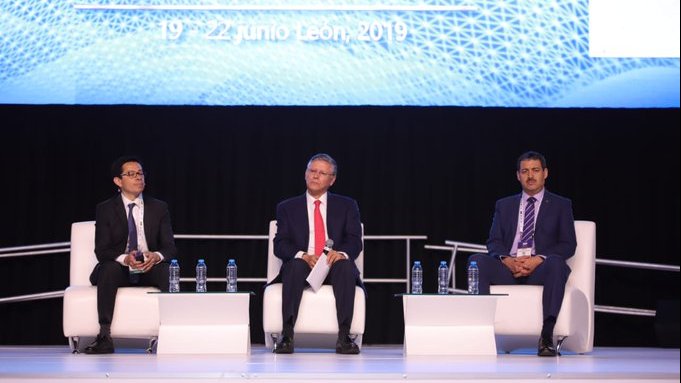Fossil Energy – PEMEX
Reuters revealed this week that PEMEX is set to change its Director of Finances for the second time in ten months.

While PEMEX is yet to issue an official statement regarding the reshuffle, sources close to the NOC revealed to Reuters that Carlos Cortez is to be named the newest Director of Finances.
It is believed that Cortez will carry out this new role in conjunction with his current position as Subdirector of Accounting and Budgets. Outgoing Financial Director Antonio López is now expected to return to his previous role as Subdirector of Risk Management, having only taken up the position as CFO in December 2021, when the then incumbent Alberto Velázquez was announced as the head of a new PEMEX subsidiary focused on the marketing of petroleum products, gas and petrochemicals in the domestic market.
The past seven months have proven quite the change of fortune for PEMEX on the financial front. Oil revenue contribution to the state treasury saw an annual growth of 39.3 percent, while year-over-year PEMEX’s total revenue has increased 88.6 percent thanks to a recovery in the price of the Mexican export mix. As of June 30, the average Mexican crude oil export mix price was up US$33/b from 2021’s average, sitting at US$98.86/b.
Buoyed by skyrocketing oil prices, PEMEX is set to score an annual profit for the first time in over a decade, having recorded two consecutive quarters of substantial gains. Coming off an annual loss of US$13.3 billion in 2021, PEMEX recorded net profits of US$6.17 billion in 1Q22 and US$6.5 in 2Q22, as the price of Mexican crude soared to $105.34/b, a 60 percent increase on this same period last year. This net profit of US$12.7 billion marks a stark contrast with the US$23 billion in losses during the same period in 2021.
Despite agreeing to cover the NOC’s debts through to 2024, the Ministry of Finance instructed PEMEX in April to resume financial debt repayments using its resources on the back of the spike in global crude prices following Russia’s invasion of Ukraine. For comparison, in 2021, Mexico’s government made capital contributions to PEMEX of US$10 billion for debt repayments and granted the NOC US$3.62 billion in tax incentives.
PEMEX is currently the world’s most indebted oil company, with a reported total financial debt of US$108.1 billion and a further US$13.7 billion owed to service providers. Following years of declining production, the cash-strapped NOC lost its coveted investment-grade debt rating with both Fitch Ratings and Moody’s. In a recent call with industry analysts, PEMEX CEO Octavio Romero was keen to portray recent profits as proof the NOC had turned a corner.
Thanks in large part to the production from 40 new priority fields, Romero also expects PEMEX to increase output to 1.9MMb/d by the end of 2022.
Romero attributed the company’s improved performance to the continued backing from the López Obrador administration and even called on Moody’s to revisit its decision to downgrade the NOC´s credit rating to junk status. In the first three months of the year, PEMEX received a reported US$2.3 billion from the government for debt repayments.
However, Romero has insisted that because of this healthier bottom line, PEMEX will be able to stand on its own two feet once more and repay the additional US$2.9 billion in regular debt payments still due this year with its own resources. Nevertheless, some industry experts have urged caution, noting that oil prices will not always remain above US$100/b and PEMEX’s output has only just returned to the pre-pandemic production mark of 1.7MMb/d.
